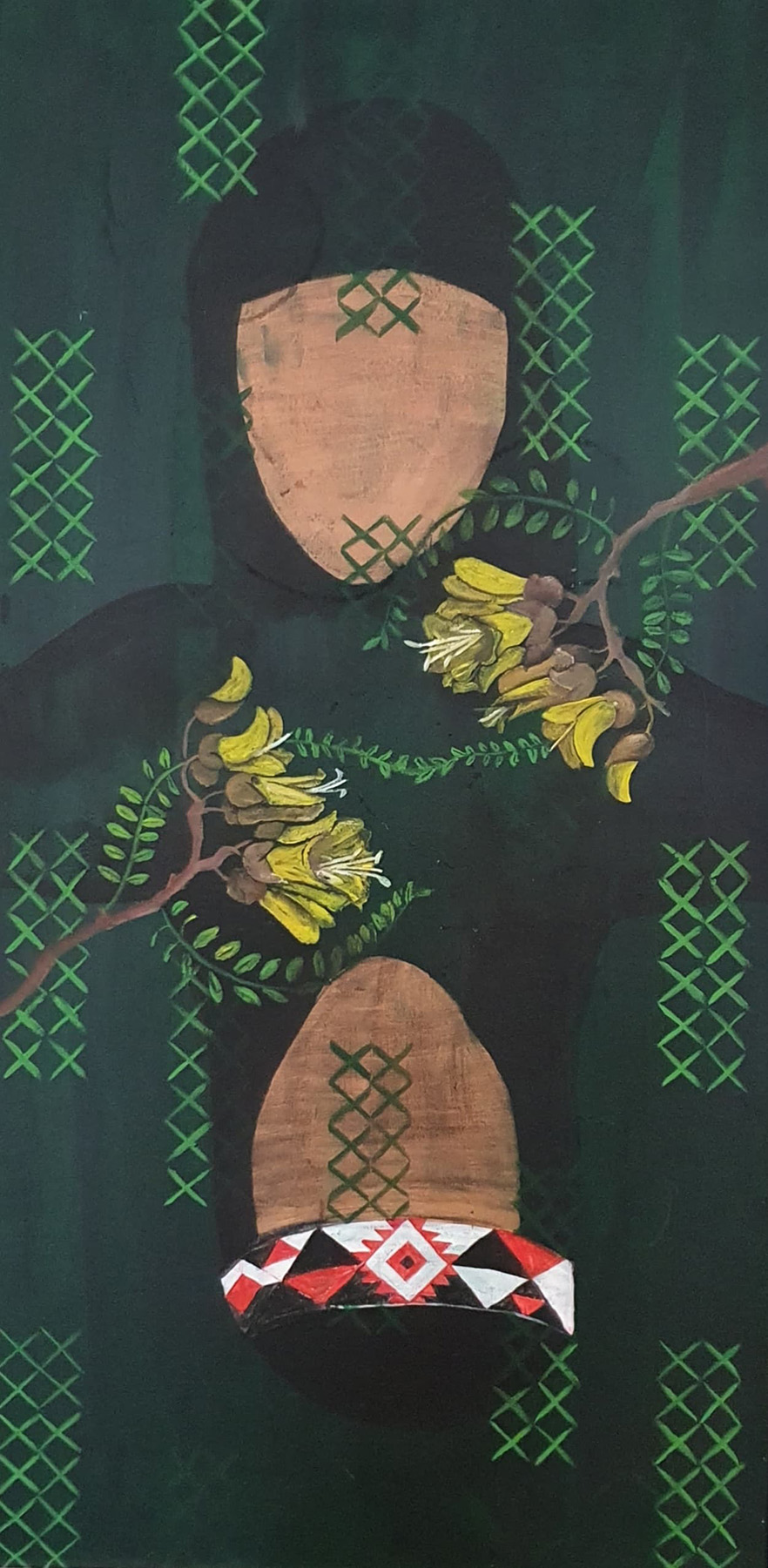
Ngā Roimata Aroha (Tears of Love), by artist Awhi Puketapu (Ngāti Porou, Ngāti Kahungunu, Ngāti Tamaterā)
The University of Otago, Christchurch, has shared a painting with staff and students – artwork which was gifted by the campus to the local Muslim community at a special March 15 2019 remembrance service held two years ago.
The painting, Ngā Roimata Aroha (Tears of Love), by artist Awhi Puketapu (Ngāti Porou, Ngāti Kahungunu, Ngāti Tamaterā) was gifted as a means of expressing the solidarity of campus staff with the Muslim community in the wake of the Christchurch terror attacks.
“Three years on, we feel it's appropriate we share this painting with our own UOC community", says UOC Dean and Head of Campus Professor Suzanne Pitama. "It is an extremely special piece from acclaimed Māori artist Awhi Puketapu which we were honoured to have received and gifted.
The painting portrays two women, representing both the Muslim and Māori communities, symbolising the respect tangata whenua share for the strength and resilience of our Muslim community over the past three years.”
Professor Pitama says the artwork sends a message – that the impacts of March 15 2019 must never be forgotten.
“The crosses in Awhi Puketapu's painting represent the tukutuku panels which in themselves tell a story. They symbolize Roimata Toroa, the large tears of an albatross, and the length of time those tears have been shed in our community.”
The green background in the painting symbolises Te Waipounamu, the South Island and the green reflection the pounamu makes as the light glistens on it. Green, in the Quran, is associated with paradise, with the artwork paying respect to those who lost their lives in a sacred place, at a sacred time.
The kōwhai tree in the painting pays homage, from a New Zealand perspective, to the Tree of Immortality discussed in the Quran. The tree in the Quran is used as an example for a concept, idea or way of life. The importance of forgiveness in the path to healing is taught through the Islam faith. The kōwhai tree is known for its healing powers, and is only given as a gift when trust and respect exist between two parties. It's representation in this painting holds the hope that healing will come and that others may have a role to support that healing.
“The painting has been designed to be hung in three different ways, to represent the different opportunities available to the UOC and Muslim communities to support, lead and work alongside each other,” says Professor Pitama.
Professor Pitama says she and campus leaders wish to acknowledge, on the 3rd anniversary of the tragic event, the direct impact it's had on the local Muslim community.
“As well as the ongoing effects on those who were injured, traumatised and who lost loved ones and friends, we also wish to acknowledge the impact on our own staff and students – for some, this was their own community, and they allowed us to shed tears alongside them.
“We'd like to acknowledge the Iman and Muslim community leadership that led us in prayers and enabled us to come to terms with such a tragic event. They role-modelled love, compassion and forgiveness in a way we'd not previously experienced.
“We also wish to acknowledge the first responders, health professionals and wider Christchurch community members who worked to maintain life in the hours following the attacks.
“May we always remember, may we never forget.”
Find an Otago Expert
Use our Media Expertise Database to find an Otago researcher for media comment.